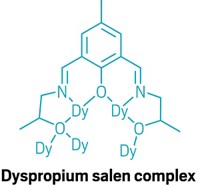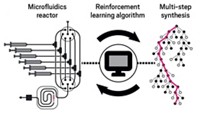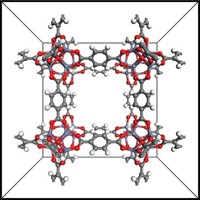Advertisement
Grab your lab coat. Let's get started
Welcome!
Welcome!
Create an account below to get 6 C&EN articles per month, receive newsletters and more - all free.
It seems this is your first time logging in online. Please enter the following information to continue.
As an ACS member you automatically get access to this site. All we need is few more details to create your reading experience.
Not you? Sign in with a different account.
Not you? Sign in with a different account.
ERROR 1
ERROR 1
ERROR 2
ERROR 2
ERROR 2
ERROR 2
ERROR 2
Password and Confirm password must match.
If you have an ACS member number, please enter it here so we can link this account to your membership. (optional)
ERROR 2
ACS values your privacy. By submitting your information, you are gaining access to C&EN and subscribing to our weekly newsletter. We use the information you provide to make your reading experience better, and we will never sell your data to third party members.
Computational Chemistry
Autonomous experiment finds stable fuel-cell material in minutes
Scientists say augmenting machine learning with physics rules can speed up materials research
by Sam Lemonick
December 28, 2021

A robotic experimenter has discovered a stable bismuth oxide that could be useful in fuel cells (Sci. Adv. 2021, DOI: 10.1126/sciadv.abg4930). The researchers who built it say the achievement demonstrates how autonomous synthesis and analysis equipment powered by machine learning can make sense of complex materials science systems faster than humans and traditional methods can.
The researchers wanted to quickly discover a way to make room temperature stable δ-Bi2O3. This phase of bismuth oxide has high oxygen-ion conductivity that would make it a good electrolyte for solid oxide fuel cells, but is only stable between about 725 °C and 825 °C, precluding easy use. This class of fuel cells efficiently generates electricity directly from hydrocarbons, but high operating temperatures have held the technology back.
Their autonomous experimenter comprises a laser which anneals thin-film Bi2O3to produce different phases. A machine learning algorithm analyzes microscopy and reflectance spectroscopy images of the annealed sample to map phase boundaries, then proposes new settings for the laser. The goal of the algorithm, called Scientific Autonomous Reasoning Agent (SARA), was to map the conditions that produce different phases in as few experiments as possible.
Their self-driving system took 1-2 min to understand the Bi2O3 phases, which the researchers say is two orders of magnitude faster than without SARA. They also say the experiment shows that laser annealing could be a feasible method for making stable δ-Bi2O3 at room temperature, setting aside the complexities that would come with scaling up the process for large-scale manufacturing.
“This is an impressive feat of technology integration that shows what a ‘self-driving’ lab experiment can achieve on real scientific problems,” computational chemist Joshua Schrier of Fordham University says. Schrier says using two kinds of measurements in the machine learning analysis is an important advance and could be applied to other chemistry problems besides making fuel-cell electrolytes.
Scientists have been excited for years about using machine learning and autonomous experimentation in materials science. Researcher Carla Gomes of Cornell University says what gives SARA an advantage over other, similar approaches to the problem is that the group encodes prior knowledge about physics and materials into the algorithms. Computer scientists call it “reasoning” when algorithms make choices from encoded knowledge, hence the name of their algorithm. Many machine learning methods let algorithms interpolate rules from training data, but good training data can be scarce for materials systems. “Current state of the art artificial intelligence or machine learning can’t really address this aspect of discovery where you have few labeled data,” Gomes says. Instead, she says, SARA’s ability to reason from limited data using the rules Gomes and her colleagues have encoded allows it to quickly generate new scientific knowledge.
Co-author Maximilian Amsler of Cornell University says future versions of SARA could integrate more analysis, like x-ray diffraction spectroscopy, as well as computational tools like density functional theory calculations, as the group continues looking for materials to address energy challenges.





Join the conversation
Contact the reporter
Submit a Letter to the Editor for publication
Engage with us on Twitter